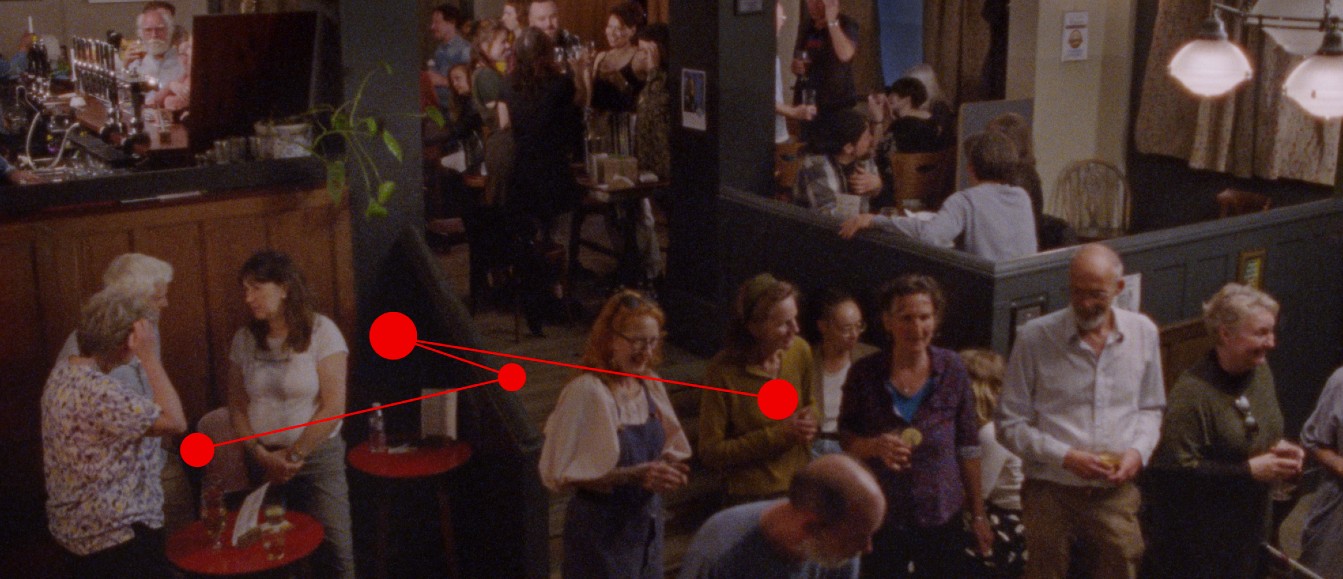LUMI Reviews The Stimming Pool- Accessing Experience
22 March 2025
Ahead of its release at QFT, LUMI programmer Neil Cadieux offers his thoughts on The Stimming Pool.

Immersion and Authentic Experience
Touted as an experimental-hybrid feature film created, directed and starring a collective of autistic artists, The Stimming Pool embraces a neurodiverse twinged otherness in every minute of its run-time. Through a varied blend of two-dimensional animation, documentary realism and fantasy, the film aims to place the viewer within a wholly unique POV. This viewpoint is presented from both shared and individual perspectives within the collective, aiming to place the viewer within the undulating logic of the neurotypical environment.
Formally, the film excels at immersing the audience into this viewpoint, providing arresting, sensory-dominated sonic and visual flair to the film’s locations, world and characters. Consequently, certain sounds within the film’s soundscape, such as humming appliances and footsteps overlap with dialogue, or are treated to a louder, and more bass-heavy mix. Unconventional, too, is the film’s colour palette, where muted whites, greys and watercolours provide a comforting yet sterile visual environment. This sterility offers room to breathe within an intentionally demanding and diverse visual landscape. We’re encouraged to dive into the film’s objective sensory understanding, before we place our own perception alongside that of the filmmakers.
Equally fascinating in presentation is the film’s recurring visual of a two-dimensional eye-tracking test. Red circles and straight lines move and enlarge in real-time. The visual is impossible to look away from, and even harder to consciously choose to not follow.
Witnessing this diagram of sight and visual attention in this abstract, yet clinical presentation allows the viewer to directly follow along with the film’s POV in real-time while comparing it to our own. This separation of perception is further solidified in a striking sequence in which an individual, the Shapeshifter, breaks into abstract choreography as they slowly traverse their empty home. Within an ambient soundscape, peppered with loud tapping noises and heavy breathing, we view close-ups of doorknobs, bannisters and other household objects being touched for sensory pleasure. Naturally, the handheld camera and viewer begin to gaze and pan around the feet, hands and fingers of the Shapeshifter. We’re encouraged by the camera to learn, and sink into the role of the body in self-stimulation, without ever explaining this behaviour on screen. This scene embodies the film’s greatest strength, its ability to provide an objective, and accurate representation of autistic experience through visual and sonic immersion.
As a whole, The Stimming Pool’s presentation of autism prioritises experience and immersion as methods of understanding and portraying difference. It isn’t an academic study, or deconstruction of neurodiversity, but an experimental work where viewers can attempt to understand and temporarily view the world through a different lens. Importantly, the film doesn’t expect anything from the audience, or encourage us to engage with a formulated point of view. Instead, we are trusted with multiple viewpoints and understandings of autism through occasionally shared, yet often individualised perceptions filmed under the same POV. Ultimately, the film isn’t for any neurotypical audience, and isn’t particularly worried about alienating, or even finding one. Its objective lies within the medium's potential to transport us into new, and under-represented territories, at which it excels.
The Stimming Pool is showing on Saturday 29 and Monday 31 March at QFT.




